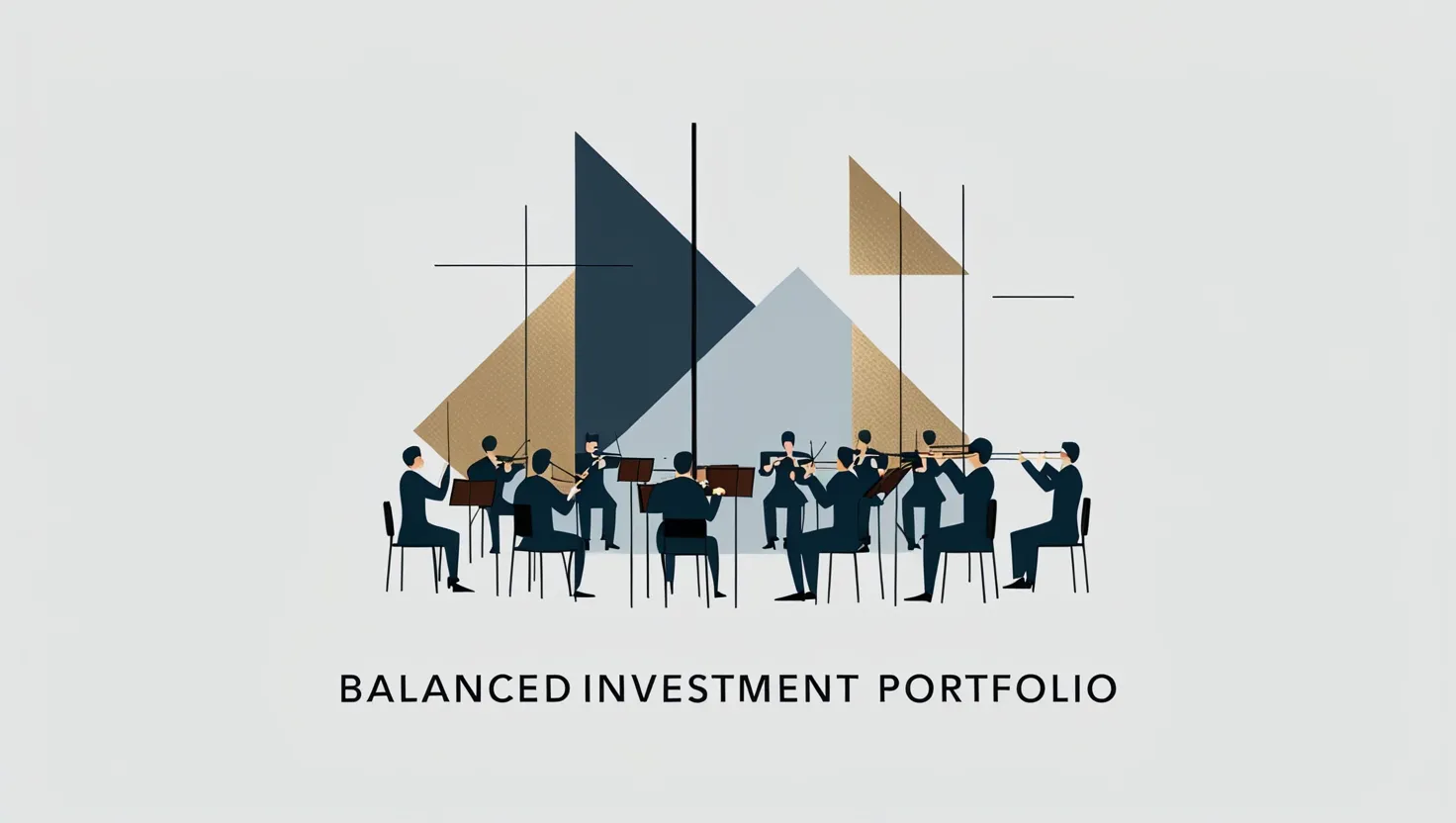As an investor, I’ve learned that creating a risk-adjusted portfolio is like conducting a symphony orchestra. Each instrument plays a crucial role, and when harmonized correctly, the result is a beautiful melody of balanced returns and managed risk. Let’s explore six strategies that can help you compose your own financial masterpiece.
Dynamic asset allocation is the conductor of our investment orchestra. It involves actively adjusting your portfolio mix based on market conditions and economic trends. Unlike static allocation, which maintains a fixed ratio of assets, dynamic allocation allows for flexibility. For instance, during periods of economic growth, you might increase your exposure to growth stocks. Conversely, when storm clouds gather on the economic horizon, you could shift towards more defensive assets like bonds or cash.
But how do you know when to make these shifts? It’s not about predicting the future, but rather about reading the signs and adapting accordingly. Economic indicators, market trends, and even geopolitical events can all signal when it’s time to adjust your asset mix. The key is to remain vigilant and responsive, without overreacting to every market hiccup.
“The individual investor should act consistently as an investor and not as a speculator.” - Benjamin Graham
This quote from the father of value investing reminds us that while we should be dynamic, we shouldn’t try to time the market perfectly. Instead, we should make measured adjustments based on long-term trends and fundamental analysis.
Sector rotation is another powerful tool in our risk-adjustment toolkit. Different sectors of the economy perform differently at various stages of the economic cycle. By strategically shifting investments between sectors, we can potentially capture gains and mitigate losses. For example, technology stocks might outperform during periods of innovation and growth, while utilities and consumer staples often shine during economic downturns.
Implementing sector rotation requires a keen understanding of economic cycles and sector performance patterns. It’s not about chasing the hottest sector, but rather about anticipating shifts and positioning your portfolio accordingly. Ask yourself: Which sectors are poised to benefit from current economic conditions? Which might struggle?
Global diversification takes our risk-adjustment strategy beyond domestic borders. By investing in various geographic regions, we can spread risk and potentially capture growth opportunities worldwide. Emerging markets, for instance, might offer higher growth potential, albeit with higher risk. Developed international markets can provide stability and diversification benefits.
However, global investing comes with its own set of challenges. Currency fluctuations, geopolitical risks, and varying regulatory environments all play a role. The key is to find a balance that aligns with your risk tolerance and investment goals. Consider starting with a core allocation to domestic markets and gradually expanding your international exposure.
Options strategies offer a sophisticated way to manage portfolio risk. Put options, for example, can provide downside protection by giving you the right to sell a stock at a predetermined price. This can act as a form of insurance against market downturns. Call options, on the other hand, can be used to generate income or potentially enhance returns.
“An investment in knowledge pays the best interest.” - Benjamin Franklin
Franklin’s wisdom applies perfectly to options trading. Before diving in, it’s crucial to educate yourself on the mechanics and risks involved. Options can be powerful tools, but they can also amplify losses if not used correctly. Start small, perhaps by using protective puts on a portion of your portfolio, and gradually expand your options strategy as you gain experience and confidence.
Alternative investments can add another layer of diversification to your portfolio. These might include real estate investment trusts (REITs), commodities, private equity, or even art and collectibles. The beauty of alternatives is that they often have low correlation with traditional stocks and bonds, potentially smoothing out portfolio returns over time.
REITs, for instance, offer exposure to real estate markets without the hassle of direct property ownership. Commodities can provide a hedge against inflation and currency fluctuations. However, alternatives often come with their own unique risks and liquidity considerations. It’s important to thoroughly research and understand any alternative investment before adding it to your portfolio.
The risk parity approach aims to balance risk contribution across different asset classes. Instead of allocating capital based on traditional asset allocation models, risk parity focuses on risk allocation. This often involves leveraging lower-risk assets like bonds to achieve a risk profile similar to higher-risk assets like stocks.
Implementing a risk parity strategy requires careful analysis and ongoing monitoring. You’ll need to regularly assess the risk contribution of each asset class and make adjustments as needed. This approach can be particularly effective in managing downside risk during market turbulence.
As we orchestrate these strategies, it’s crucial to regularly assess your risk tolerance. Your capacity for risk isn’t static – it evolves with your life circumstances, financial goals, and market experiences. A portfolio that felt comfortable in your 30s might feel too aggressive as you approach retirement. Regularly ask yourself: Has my risk tolerance changed? Are my investments still aligned with my goals and comfort level?
Monitoring correlation between assets is another vital practice. The benefits of diversification can be diminished if your assets move in lockstep. Keep an eye on how different parts of your portfolio interact, especially during market stress. Are your “diversifiers” truly providing diversification when you need it most?
Rebalancing is the tuning process for your investment orchestra. As different assets perform differently over time, your carefully crafted allocation can drift. Regular rebalancing – perhaps quarterly or semi-annually – helps maintain your desired risk profile. It also enforces a disciplined “buy low, sell high” approach.
Setting specific risk targets for each investment category can provide a framework for decision-making. For instance, you might decide that no single stock should account for more than 5% of your portfolio, or that your overall equity exposure shouldn’t exceed a certain percentage based on your risk tolerance.
“The four most dangerous words in investing are: ‘This time it’s different.’” - Sir John Templeton
Templeton’s warning serves as a reminder to stay grounded in timeless investment principles, even as we adapt to changing market conditions. While our strategies may evolve, the fundamental goals of risk management and long-term growth remain constant.
As we conclude our exploration of risk-adjusted portfolio strategies, remember that this is an ongoing process, not a one-time event. Markets evolve, economies shift, and your own circumstances change. The key to success lies in remaining flexible, informed, and disciplined.
What’s your current approach to risk management in your portfolio? Have you considered implementing any of these strategies? Remember, the goal isn’t to eliminate risk entirely – that would also eliminate the potential for returns. Instead, we aim to create a portfolio that aligns with our risk tolerance and financial objectives, allowing us to sleep soundly at night while still pursuing our long-term goals.
In the end, a well-constructed, risk-adjusted portfolio is like a finely tuned instrument. It requires regular attention and occasional adjustments, but when managed properly, it can produce a lifetime of financial harmony. So, pick up your conductor’s baton, and start orchestrating your financial future today.






